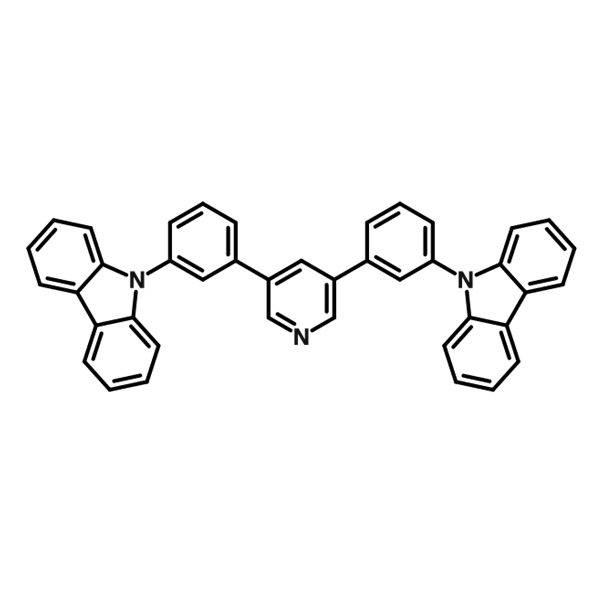Host Materials, Materials, OLED Materials, Phosphorescent Host Materials, Semiconducting Molecules


Combining a carbazole electron donor with high triplet energy, and a pyridine electron acceptor with high electron affinity, 3,5-bis(3-(carbazol-9-yl)phenyl)pyridine (35DCzPPy) is one of the most common bipolar host materials used in organic light-emitting diodes.
35DCzPPy is an isomer of 26DCzPPy, differing in the position of functionalisations of the central pyridine ring. 35DCzPPy is more electron-rich, so 26DCzPPy has a more balanced hole and electron injection and transport than 35DCzPPy.
Bipolar host materials are the molecules composed of an electron-donating moiety, capable of mediating hole injection and transportation; and an electron-withdrawing moiety capable of mediating electron injection and transportation.
| CAS number | 1013405-25-8 |
|---|---|
| Chemical formula | C41H27N3 |
| Molecular weight | 561.67 g/mol |
| Absorption | λmax 307 nm, 317 nm (in CH2Cl2) |
| Fluorescence | λem 347 nm (in CH2Cl2) |
| HOMO/LUMO | HOMO = 6.18 eV, LUMO = 2.75 eV [1] |
| Synonyms | 3,5-bis(3-(9H-carbazol-9-yl)phenyl)pyridine |
| Classification / Family | Carbazole derivatives, Bipolar charge transport layer materials, Phosphorescent host materials, OLEDs, Organic electronics |
| Purity | >98.0% |
|---|---|
| Melting point | TGA > 290 °C (0.5% weight loss) |
| Colour | White powder/crystals |
 Chemical Structure of 3,5-bis(3-(9H-carbazol-9-yl)phenyl)pyridine (35DCzPPy)
Chemical Structure of 3,5-bis(3-(9H-carbazol-9-yl)phenyl)pyridine (35DCzPPy)专业代理国外知名镊子品牌
我们将竭诚为你服务
0755-23003036